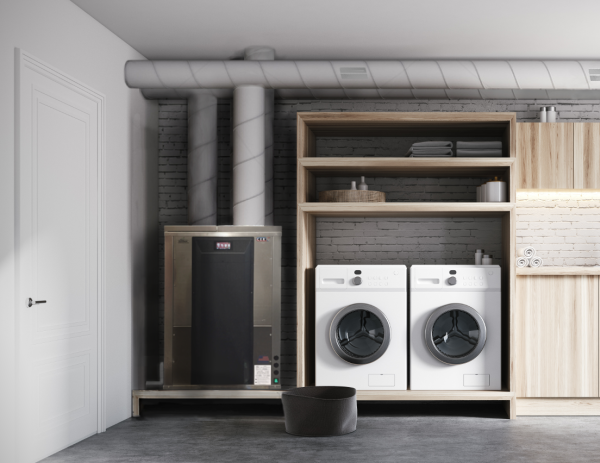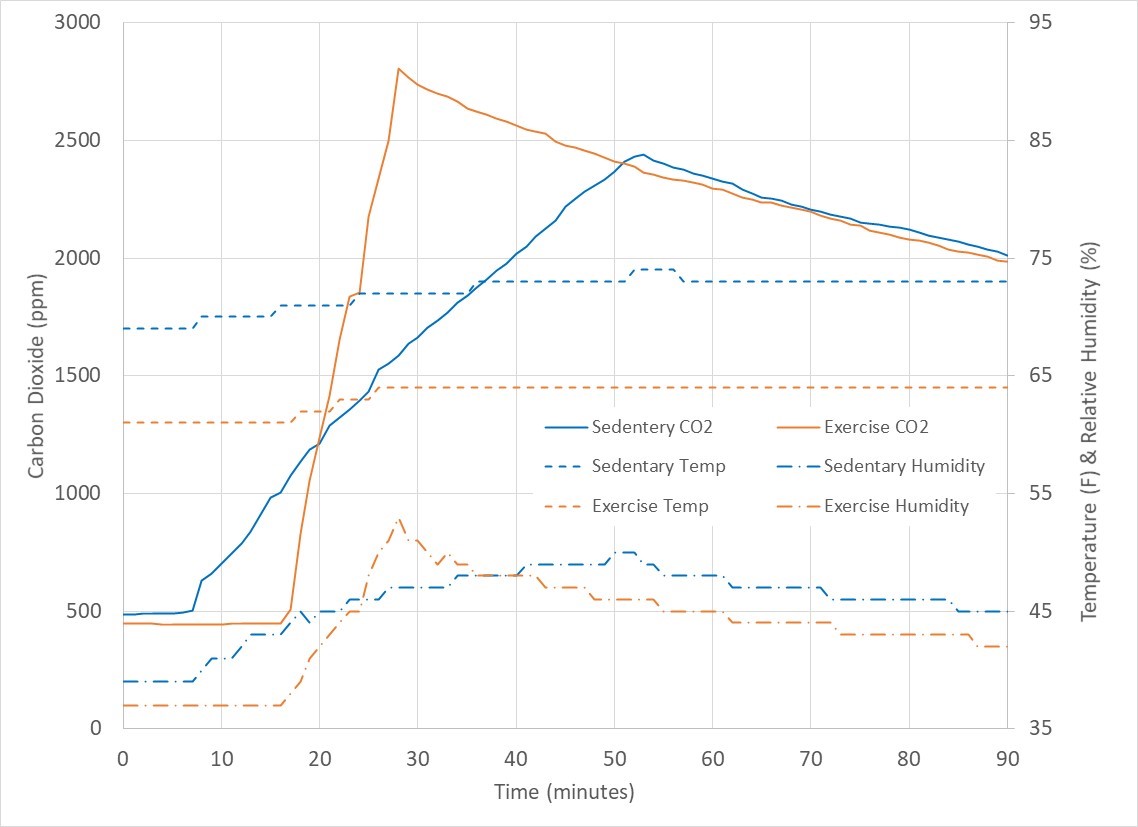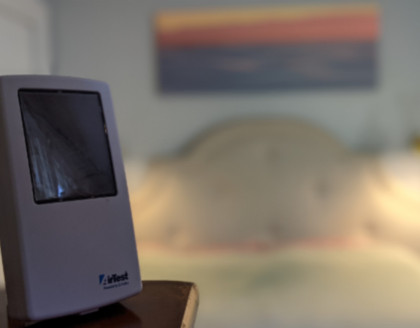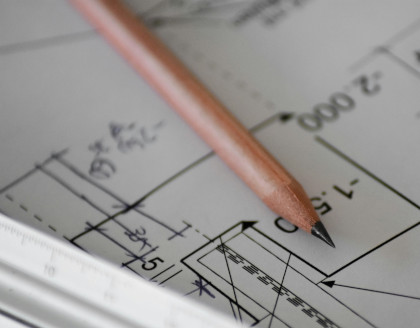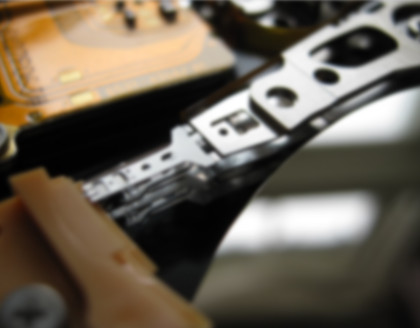How long does it take to pollute a room? We sent Ty into our environment test chamber to collect some data so we can show you. Placing Ty in the test chamber also reduces distractions, resulting in increased productivity at Build Equinox.
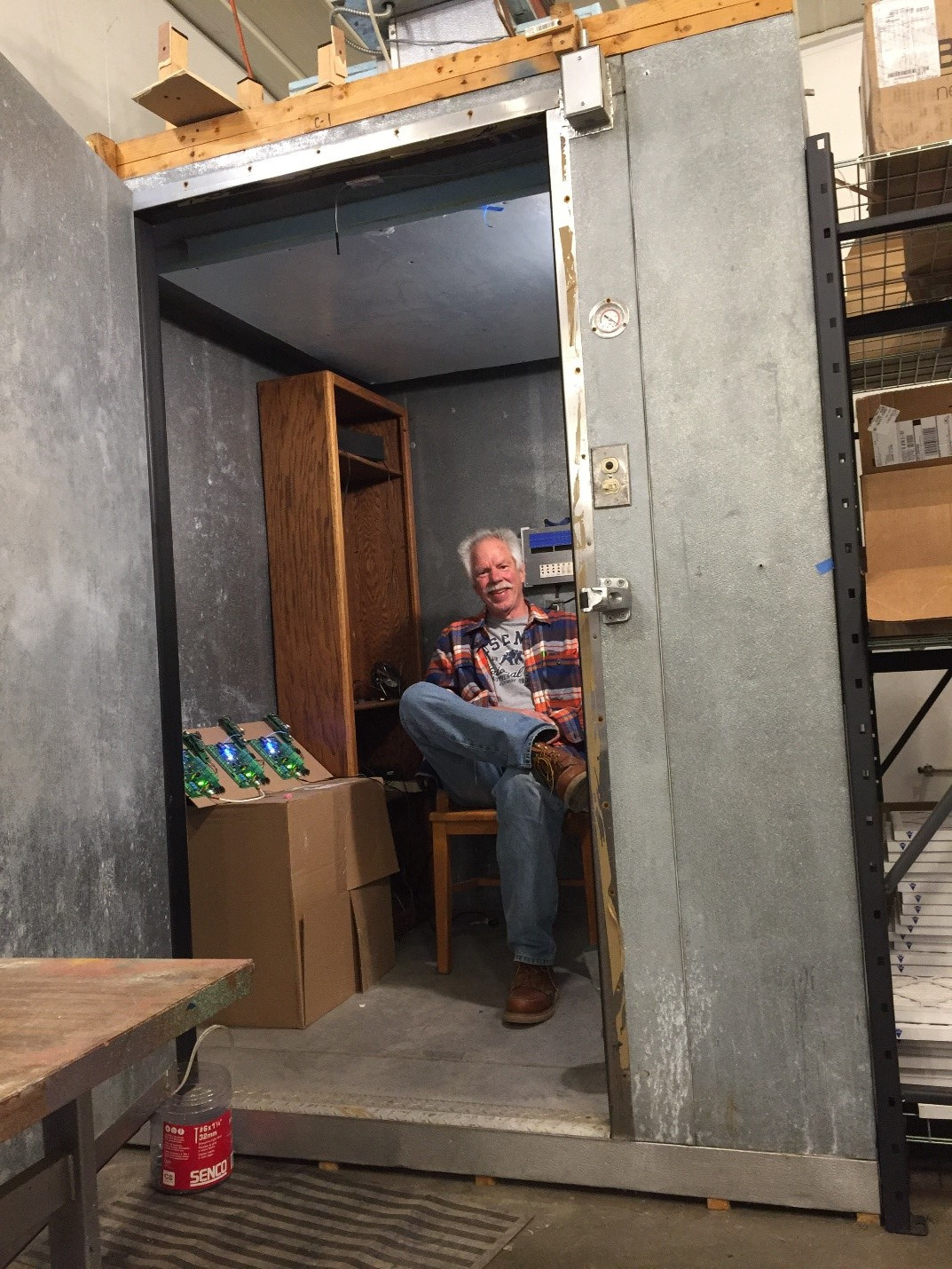 Ty sitting in our environment test chamber. Note the three CERV2 circuit boards to his right monitoring air quality data. We use the test chamber for comparing and assessing different sensors (CO2, VOCs, particulates) and use it to conduct energy performance tests on refrigerators and similar appliances.
Ty sitting in our environment test chamber. Note the three CERV2 circuit boards to his right monitoring air quality data. We use the test chamber for comparing and assessing different sensors (CO2, VOCs, particulates) and use it to conduct energy performance tests on refrigerators and similar appliances.Our test chamber is 65” by 65” by 77” high for a volume of 188 cubic feet (5.33 cubic meters), sufficient for a person to sit at a small table or stand and move about. For sedentary activity (office work), an average person breathing 8 liters per minute would inhale the test chamber volume every 11 hours.
We conducted two tests to demonstrate human production of carbon dioxide from respiration. In one case, Ty was sitting and working on a computer. For the second case, Ty raised and lowered a 10 pound weight from the floor to the table and back to the floor every 5 seconds for 2 minutes, followed by a 1 minute rest period (because he’s old and worn out), followed by repeated sequences of 2 minutes of work and 1 minute of rest. He did a 2 minute “warm up” prior to entering the test chamber. His resting pulse was 55bpm (beats per minute) and exercising pulse was 90bpm.
The chart shows carbon dioxide, temperature and humidity in the chamber for the two tests. Notice the dynamic nature of carbon dioxide from human respiration. In both cases, carbon dioxide varies much more than temperature and humidity. Those who have followed our work know that we advocate doubling of today’s ventilation standards to 40cfm per person for sedentary respiration levels.
Atmospheric carbon dioxide now exceeds 400ppm. It was 300ppm when Ty was born in 1952. 25% higher ventilation air flow is now required to keep indoor carbon dioxide at 800ppm (our recommended level) than required in 1952. As atmospheric carbon dioxide reaches 600ppm, fresh air ventilation air flow rates must be doubled in order to keep indoor carbon dioxide at 800ppm. Note that there is no question that carbon dioxide will reach 600ppm. The only question is whether we reach 600ppm in 40 years or 60 years. And if you are building a house designed to last 100years, you should be designing a ventilation system for today and tomorrow.
The sedentary test took 9 minutes to increase from 500ppm to 1000ppm. Ty stayed in the chamber for 45 minutes, with carbon dioxide reaching 2500ppm. 2500ppm of carbon dioxide does not smell and is not deadly, but it is a level that impairs cognition, degrades sleep, and indicates excessive buildup of other chemical concentrations and contagions.
Only 2 minutes were required to increase the chamber air from 500ppm to 1000ppm during the exercise test! What sense do today’s “one size fits all” constant ventilation standards make? A person sleeping releases a tenth of the carbon dioxide of someone vigorously exercising. A house with 5 people requires more ventilation than a house with 2 people, and an empty house requires no ventilation (but does require smart conditioning to manage humidity and non-human pollutant buildup). And now, with today’s work-from-home revolution, we are spending more hours in our homes without any increase in fresh air.
There is a lot of information hiding in our experimental data. “Decay” data after Ty left the chamber allows us to determine the test chamber’s infiltration rate. Analysis of carbon dioxide decay after each test found an infiltration rate of 0.43ACH (air changes per hour). An air exchange rate of 0.43ACH may sound like a reasonable ventilation rate because some building ventilation standards recommend 0.3ACH ventilation. Based on the chamber’s volume, 0.43 ACH is an infiltration rate of 1.35cfm (0.64l/s or 38.2l/minute), an extremely low, unhealthy ventilation level. ACH is an inappropriate measure of building ventilation needs that ignores human fresh air requirements!
The chamber infiltration rate provides information for determining Ty’s carbon dioxide production rate. Additional analysis applied to the sedentary test data shows Ty released 0.030kg per hour of carbon dioxide. His increased metabolism during the exercise test elevated carbon dioxide production to 0.124kg per hour. It is common sense that a ventilation system should increase air flow when metabolism is elevated. Likewise, ventilation should decrease when activity levels are lower.
The bottom line is this. Healthy indoor environments require smart ventilation systems that sense and respond to human fresh air needs. Indoor air conditions are dynamic, changing moment-by-moment. Building ventilation based on fixed air flow rates are worse than broken clocks. A broken clock is correct two times per day while today’s odor-based ventilation standards are never correct.

